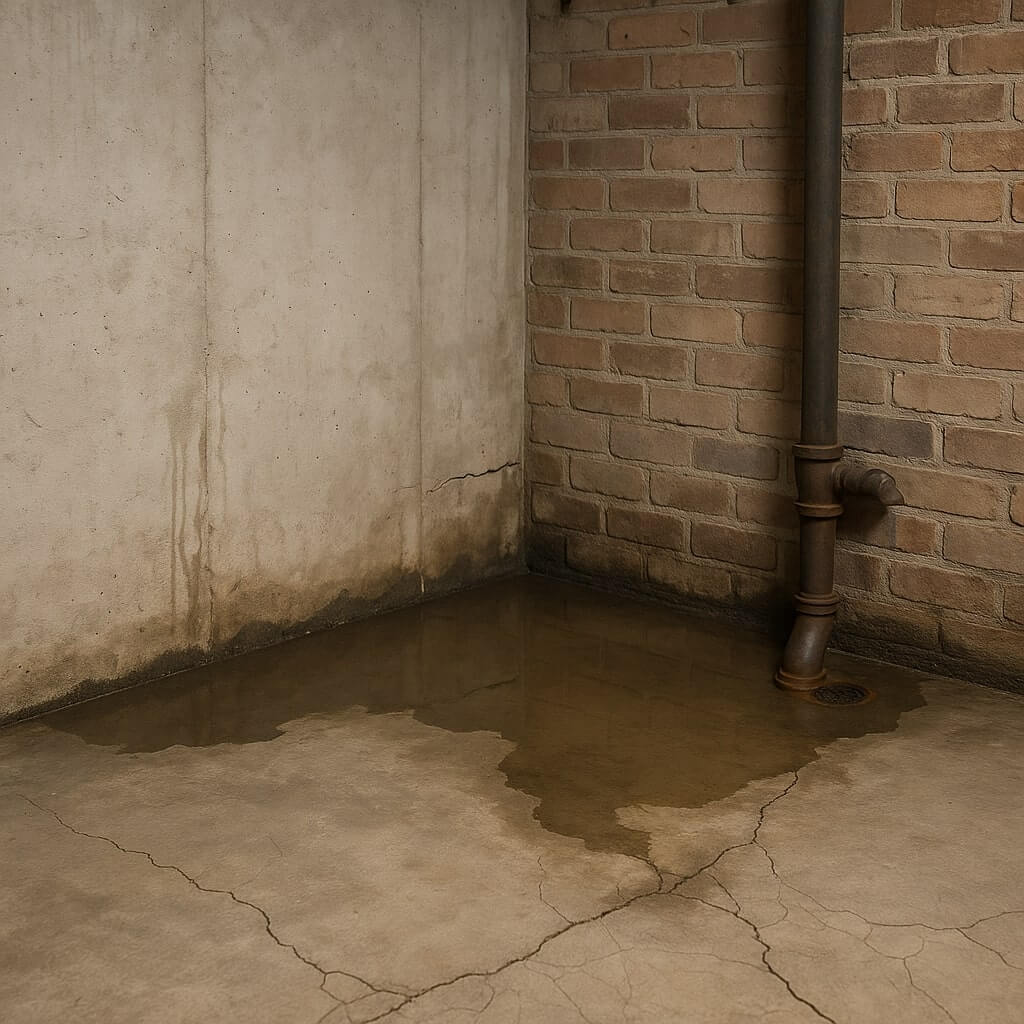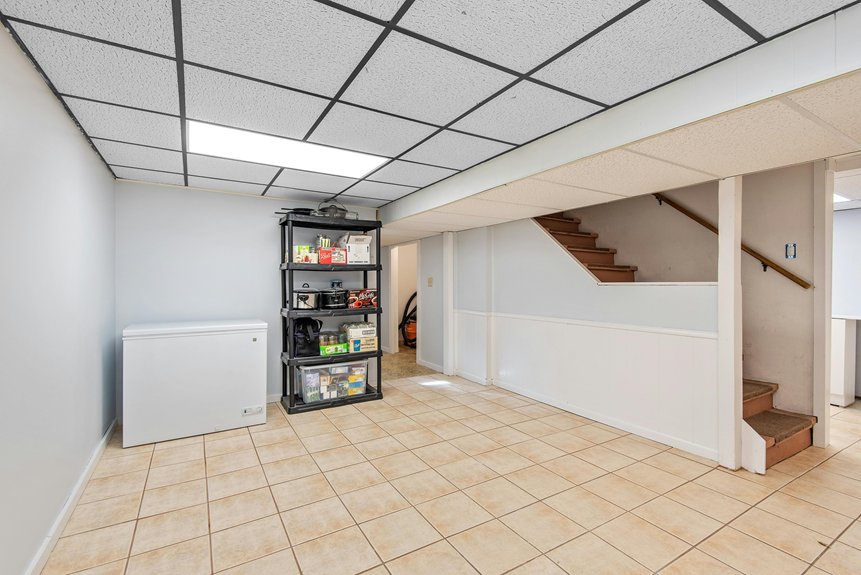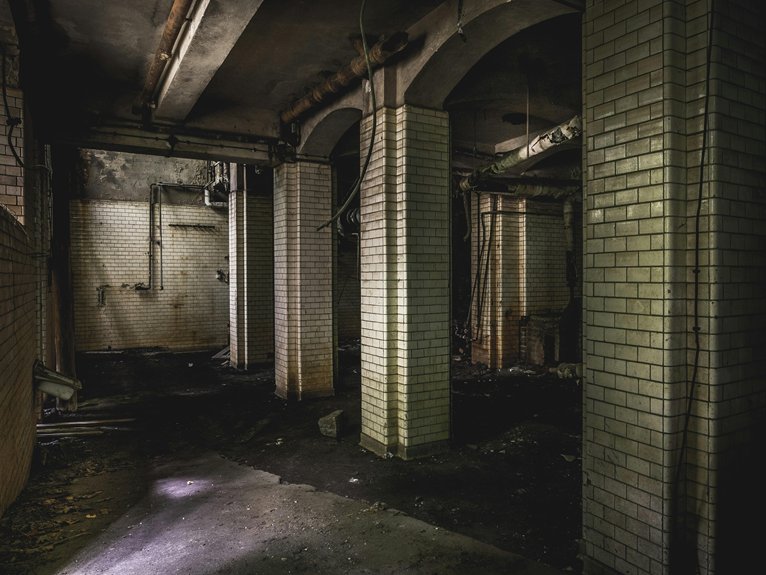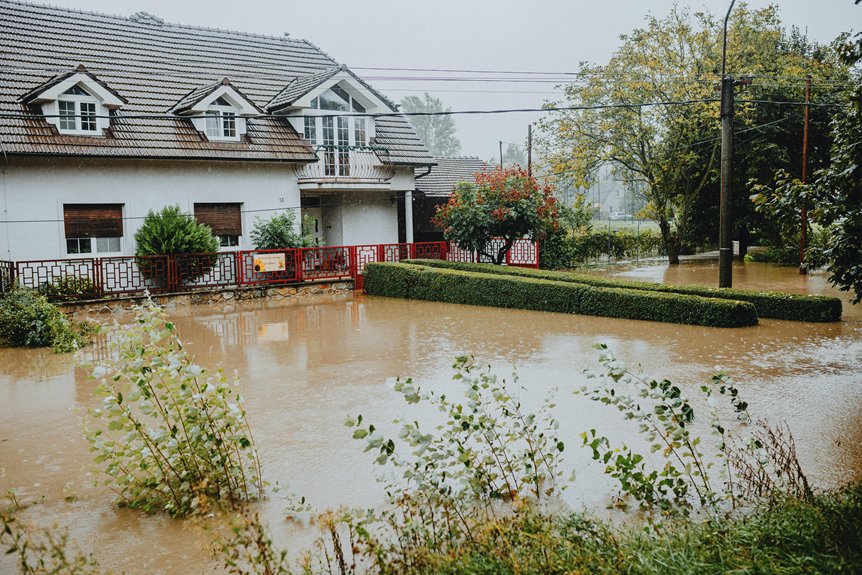When it comes to basement waterproofing in Ann Arbor, you might be overlooking some critical aspects. Many homeowners make mistakes that can lead to serious issues like mold growth and structural damage. From improper drainage solutions to neglecting gutters, these errors can accumulate and become costly. Understanding these common pitfalls is essential for protecting your home. Let’s explore the key mistakes that could be jeopardizing your basement’s integrity.
Key Takeaways
- Ignoring proper drainage solutions can lead to significant water damage in basements and homes.
- Neglecting to seal cracks and gaps allows moisture to enter, causing further issues.
- Overlooking gutter maintenance increases the risk of water pooling near the foundation.
- Failing to address grading issues can direct water towards the home, raising flood risks.
- Skipping professional inspections may result in unnoticed vulnerabilities and long-term damage.
Ignoring Proper Drainage Solutions
When you ignore proper drainage solutions, you risk significant water damage to your basement and home.
Effective drainage systems are essential for managing water flow away from your property. Without these systems, rainwater and melting snow can accumulate, leading to leaks and flooding.
Installing sump pumps, French drains, and downspout extensions can help direct excess water away from your foundation. Regularly inspecting and maintaining these systems guarantees they function correctly.
Neglecting to Seal Cracks and Gaps
Neglecting to seal cracks and gaps in your basement can lead to significant moisture issues if not addressed promptly.
Early detection of these vulnerabilities is essential, as it allows for effective sealing techniques that can prevent water intrusion.
Importance of Early Detection
Detecting and sealing cracks and gaps early is essential in preventing significant water damage in your basement. By addressing these issues promptly, you not only protect your home but also save money on costly repairs.
Early warning signs, such as dampness or discoloration, should never be ignored. Implementing proactive measures, like regular inspections, can help you identify potential vulnerabilities before they escalate.
Effective Sealing Techniques
Addressing cracks and gaps isn’t just a matter of maintaining your home’s aesthetic; it’s essential for preventing water intrusion.
Effective sealing techniques involve choosing the right sealing methods and mastering application techniques.
- Inspect all visible cracks and gaps regularly.
- Choose appropriate sealants, like polyurethane or epoxy.
- Clean surfaces thoroughly before application.
- Apply sealant in ideal weather conditions for best adhesion.
- Monitor the sealed areas for any signs of failure.
Overlooking the Importance of Gutters
While you might focus heavily on sealing cracks and installing sump pumps, overlooking the importance of gutters can lead to considerable water issues in your basement.
Proper gutter maintenance is essential for directing water flow away from your foundation. Clogged or damaged gutters can cause water to overflow, pooling near your home and seeping into the basement.
Regularly inspect and clean your gutters to guarantee they function effectively. By maintaining clear gutters, you greatly reduce the risk of water intrusion and protect your basement from costly damage.
Don’t underestimate this critical aspect of basement waterproofing.
Failing to Address Grading Issues
When you ignore grading issues around your foundation, you risk creating an environment conducive to water accumulation. Proper grading solutions help direct water away from your home, preventing potential basement flooding.
Consider these factors:
- Assess the slope of your yard; it should lead away from the foundation.
- Evaluate soil composition; clay-heavy soils retain water, increasing flood risk.
- Install drainage systems to complement grading efforts.
- Regularly inspect for erosion or settling that can alter your grading.
- Optimize landscaping to enhance drainage rather than hinder it.
Choosing the Wrong Waterproofing Products
When you choose waterproofing products without thorough research, you risk using ineffective solutions that won’t protect your basement.
It’s essential to understand the specific applications and limitations of each material, as mismatched products can lead to costly failures.
Inadequate Product Research
Choosing the right waterproofing products is essential for effective basement protection, as using inadequate materials can lead to costly repairs and ongoing moisture issues.
To avoid this mistake, make certain you thoroughly research and compare products before making a decision.
Utilize reliable research sources, such as:
- Manufacturer specifications
- Customer reviews and testimonials
- Industry ratings and certifications
- Professional recommendations
- Comparative analysis of product performance
Misunderstanding Material Applications
Understanding how to apply different waterproofing materials is just as important as selecting the right ones. You need to guarantee material compatibility; using incompatible products can lead to failures.
For instance, if you apply a sealant over an incompatible surface, it may not bond effectively. Additionally, employing incorrect application techniques can compromise the effectiveness of your chosen products.
Always follow manufacturer guidelines for both preparation and application. Whether you’re using liquid membranes or waterproofing paints, precise techniques, such as proper surface cleaning and even application, are vital for peak performance.
Avoid these mistakes to guarantee a dry, durable basement environment.
Skipping Professional Inspection
Although many homeowners might feel tempted to tackle basement waterproofing as a DIY project, skipping a professional inspection can lead to costly mistakes.
A professional assessment guarantees you identify underlying issues that may not be visible. Here are some inspection benefits you might overlook:
- Accurate diagnosis of water intrusion sources
- Identification of structural vulnerabilities
- Assessment of existing drainage systems
- Recommendations for effective waterproofing solutions
- Prevention of long-term damage and mold growth
Investing in a professional inspection can save you time and money in the long run, helping you avoid unnecessary repairs and guaranteeing a dry, safe basement environment.
Underestimating the Power of Humidity Control
Even after addressing structural issues identified during a professional inspection, many homeowners overlook the importance of humidity control in their basements. High humidity levels can lead to mold growth and structural damage, undermining your waterproofing efforts. Implementing effective moisture control is vital for maintaining a dry, healthy environment.
| Humidity Level | Effect on Basement | Recommended Action |
|---|---|---|
| 30-50% | Ideal | Monitor regularly |
| 50-70% | Mold growth risk | Use dehumidifiers |
| 70%+ | Severe damage | Increase ventilation |
Don’t underestimate how significant humidity management is for your basement’s longevity.
Conclusion
To protect your Ann Arbor home from water damage, it’s essential to avoid these common basement waterproofing mistakes. By prioritizing proper drainage solutions, sealing cracks, maintaining gutters, addressing grading, selecting appropriate products, scheduling professional inspections, and managing humidity levels, you can markedly reduce the risk of costly repairs and mold growth. Proactive measures not only safeguard your basement but also enhance your home’s overall integrity and value. Don’t wait—take action now to guarantee a dry, healthy living space.




